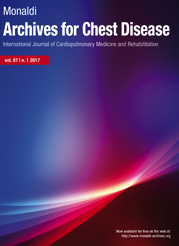Determinants of treatment outcome in children with multidrug-resistant tuberculosis: a tertiary care hospital experience
All claims expressed in this article are solely those of the authors and do not necessarily represent those of their affiliated organizations, or those of the publisher, the editors and the reviewers. Any product that may be evaluated in this article or claim that may be made by its manufacturer is not guaranteed or endorsed by the publisher.
Accepted: 3 April 2025
Authors
This study aimed to analyze the significant factors associated with unsuccessful treatment outcomes among multidrug-resistant tuberculosis in children under 18. This observational study was conducted at the Bahawal Victoria Hospital, Bahawalpur, Pakistan, at the Programmatic Management Unit of the National Tuberculosis Control Program of Pakistan. The data were collected retrospectively using the Electronic Nominal Recording Reporting System records for all the eligible drug-resistant tuberculosis patients registered at the study sites between June 2014 and September 2022. Multivariate binary logistic regression analysis was used to analyze the factors significantly associated with unsuccessful treatment outcomes. This study included 88 children. Of the 88 patients, 64 (72.8%) completed their treatment successfully. A total of 13 patients (14.8%) died, 2 (2.3%) had treatment failure, and 9 (10.2%) were lost to follow-up. Factors significantly associated with unsuccessful treatment outcomes included a history of use of second-line drugs and those with favorable interim treatment outcomes (negative association). The overall treatment success rate among the children was 72.8%, which can be further improved by reducing loss to follow-up and rational use of second-line drugs in treating drug-sensitive tuberculosis. This can be done by devising a careful, targeted treatment regimen and patient education.
Ethics Approval
Consent for publication was provided by the ethical review committee of QAMC/BVH under the reference no. QAMC/BVH-00921.How to Cite

This work is licensed under a Creative Commons Attribution-NonCommercial 4.0 International License.






